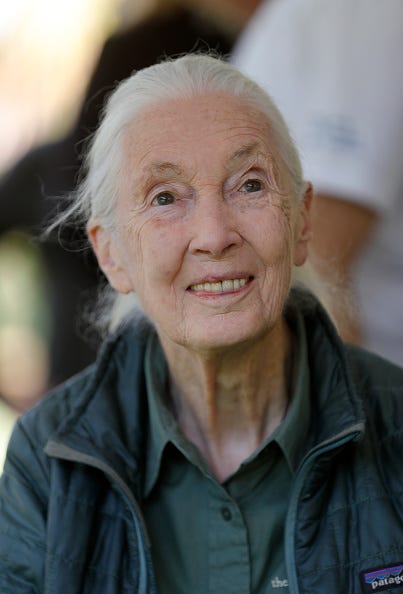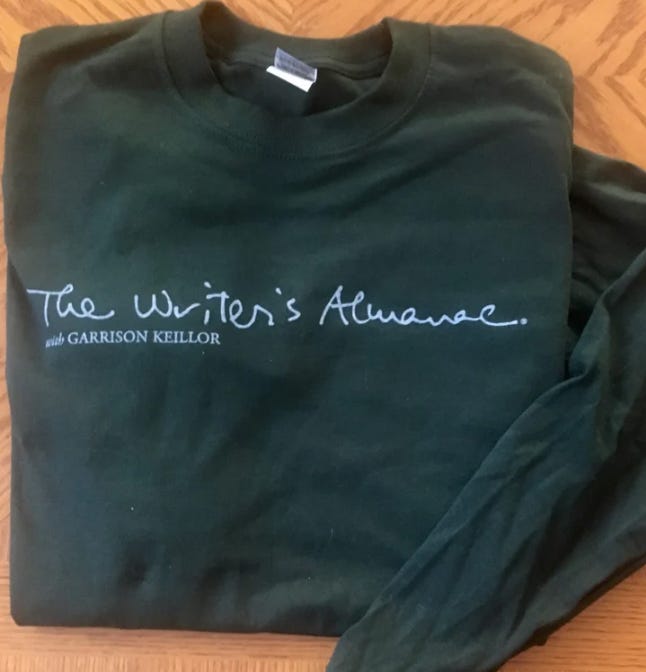“Beauty is a Real Thing, I’ve Seen It” by Jay Hopler from The Abridged History of Rainfall. © McSweeney’s Poetry Series, 2016.
ORIGINAL TEXT AND AUDIO - 2017
Today is the birthday of American short-story writer and historian Washington Irving, born in New York City (1783). He is best known for his stories Rip Van Winkle, about a man who escapes his nagging wife for a nap in the woods and wakes up 20 years later to a greatly changed world, and The Legend of Sleepy Hollow, which introduced the lasting legend of the Headless Horseman into countless children’s nightmares. Both stories were included in Irving’s collection The Sketch Book of Geoffrey Crayon, Gent (1819–1820). Crayon was Irving’s pseudonym. The book was the first bit of American literature to be widely popular in Britain and Europe. Most historians consider Irving to be the first American author to make a living solely by his writing.
It’s the birthday of San Francisco columnist Herb Caen, born in Sacramento, California (1916). He wrote his column six days a week from 1938 to 1991, and he had an established routine: he wrote in the morning, hung out in a bar or café in the afternoon, and attended A-list events in the evening. He wrote for the San Francisco Chronicle for his entire career — except for four years during World War II and an eight-year stint with the San Francisco Examiner in the 1950s. In his inaugural column for the Examiner, he wrote of what he called “the Queen City”: “For years, it has been fun to Chronicle her … it will be even more fun, I know, to Examiner again, and again."
During the week, he shared concise news items, usually separated by ellipses, which he called “three-dot journalism. “On Sundays, he dedicated his column inches to meditations on the city. From 1971: “The hookers are brazen, the abalone is frozen, and every night is Mugger’s Day. Yet, in spite of it all, San Francisco remains one of the great tourist cities. Most triumphantly, there is life in the streets — raw, raucous, roistering and real."
Caen published two compilations of his columns in book form: Baghdad by the Bay (1949) and Don’t Call it Frisco (1953).
Today is the birthday of Dr. Jane Goodall (1934), famed British primatologist who revealed the previously unknown social behaviors of chimpanzees by living for years among them.
Goodall was born in London to a businessman father and novelist mother, who noted her love of animals from a very young age. One day when they could not find her, Jane’s parents frantically called the police to report their daughter missing. A few hours later, they discovered that she had been staked out in the family’s backyard chicken coop to watch a hen lay an egg.
By the time it was time to go to university, Goodall realized that she could not afford it. Instead, she worked secretary jobs, saving up for a long-awaited trip to Africa. Once there, she telephoned the famous anthropologist Louis Leakey to discuss animals. Leakey believed that studying primates would reveal important information for the field of evolution. He hired Jane as a secretary, secretly hoping that she would serve as a primate researcher in the field for him. He believed that she had the right personality to spend long periods of time alone in the wilderness. Many of his colleagues were outraged at his decision to work with a woman with no formal scientific education or college degree.
Goodall traveled to Tanzania in 1960 at just 26 years old and with only a notebook and binoculars in tow, prepared to embed herself among the wild chimpanzees of Gombe Stream National Park. She spent many months establishing herself as a nonthreatening presence, and soon worked her way up to what she called “the banana club” — a trust-building method in which she offered bananas to the chimpanzees every day. Goodall became familiar with nearly half of the reserve’s 100-plus chimps. She climbed trees with them, mimicked their behaviors, and sampled their foods.
Her participatory methods had many fellow anthropologists aghast; they disapproved of her anthropomorphic tendencies to name her subjects rather than number them, and also her choice to bait them with food. Some of the more well-known chimpanzees that she worked with were David Greybeard, the alpha male who first accepted Goodall, and Flo, a high-ranking female who gained such popularity that her eventual death warranted an obituary from the London Times.
Goodall was the first to observe that chimpanzees eat meat (previously, they had been thought to be vegetarians) and make and use their own tools. The merit of her work allowed her to become one of the only people in Cambridge University history to receive a Ph.D. without first earning a baccalaureate degree. While in school, she published her first book for a popular audience, My Friends, the Wild Chimpanzees (1970). Her Cambridge mentor at the time was so enraged that he nearly called for her expulsion, reportedly saying of the book, “It’s — it’s — it’s for the general public!” Her first major book, In the Shadow of Man, was published in 1971, and with that Goodall solidified her reputation as one of the earliest and most successful science writers.
She still works as a human and animals’ rights activist, traveling almost constantly in her lobbying for conservation initiatives. She says that she has not slept in the same bed for more than three consecutive weeks in over 20 years.
“Can you imagine what it’s like for me to hear, ‘Because of your last visit, we’re doing this work’?” Goodall once said. “You never know who it’s going to be, or what they’re going to do. But as long as I do it, it keeps happening. So you can see why I can’t very well stop.”
It’s the birthday of nature writer John Burroughs, born near Roxbury, New York (1837). He published his first collection of nature writings, Wake Robin, in 1871. Among his most well-known works are Birds and Poets (1877), Locusts and Wild Honey (1879), Signs and Seasons (1886), and Ways of Nature (1905). As a young man, he’d tried his hand at many things: at botany, medicine, school teaching and office work at the Treasury in Washington, D.C., where he came under the influence of Walt Whitman. The poet urged Burroughs to leave his office job and write full time. Burroughs moved to the Catskill Mountains in New York State and maintained a successful writing career for decades. He published hundreds of articles on birds, flowers, and natural wonders of all sorts — his 27 books sold over 2 million copies — and he was the most famous nature writer of the day. In 1899, Burroughs joined a host of luminaries, including fellow naturalist John Muir, conservationist Theodore Roosevelt, and painter Louis Agassiz Fuertes, on a scientific expedition along the Alaska coast led by scientist Edward Harriman. Together, they wrote about their trip in a private souvenir album called The Harriman Alaska Expedition: Chronicles and Souvenirs May to August 1899.
It’s the birthday of a writer whose children’s books have sold more than 20 million copies, Sandra Keith Boynton, born to Quaker parents in Orange, New Jersey (1953), one of whom was an English teacher. She went to Yale where she majored in English. She became a designer of humorous greeting cards. It was she who designed a Happy Birthday card with a hippopotamus, a bird, and two sheep on it that said: “Hippo Birdie Two Ewes.” It sold 10 million copies.
Her children’s books include Hippos Go Berserk (1977), Chocolate: The Consuming Passion (1982), Philadelphia Chickens (2002), and most recently, Dinosaur Dance! (2016).
Be well, do good work, and keep in touch.®
SUPPORT The Writer’s Almanac through the purchase of our long sleeved t-shirt






I met J Goodall once. I was her waitress at a fancy restaurant as I was working my way through college. She treated me like dirt. She made it clear that though I admired her and had read several of her books, she felt only contempt for me in my working class job. She treats her animals better than the ordinary people she has to come into contact with.
Love your daily reports Garrison! Every day is a Gift!